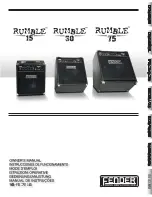
14
FISCHERSCOPE
®
X-RAY
Instrument Overview
Functional Principle of the Instrument
4. A light source (not shown in Fig. 2-2) illuminates the sample. A mirror and lens direct
the image of the measurement location to a color video camera. The mirror has a hole
in its center for the primary radiation to pass through.
5. The aperture (collimator) limits the cross-section of the primary beam in order to excite
a measurement spot of a defined size.
6. The primary x-radiation impacts the atoms on the sample surface (coating layer and
base material) and in the process knocks electrons from the inner electron shell.
Electrons from outer electron shells fill the resultant voids emitting a fluorescence
radiation that is characteristic in its energy distribution for a particular material.
7. The energy dispersive detector measures the energy distribution of the fluorescence
radiation. A multistage electronics circuit processes the measurement signals.
8. The measured spectrum shows lines or peaks that are characteristic for the chemical
elements in the sample.
9. The WinFTM Software computes the thickness of the coating(s) and/or the analysis
result. The video image of the sample is shown in the WinFTM window. The precise
position of the measurement location and the measurement spot is possible due to the
special design of the optical and the x-ray guidance systems.
Summary of Contents for FISCHERSCOPE X-RAY 4000 Series
Page 18: ...18 FISCHERSCOPE X RAY Components...
Page 24: ...24 FISCHERSCOPE X RAY Manual Measurements Deleting Measurement Readings...
Page 28: ...28 FISCHERSCOPE X RAY WinFTM File Structure Product...
Page 44: ...44 FISCHERSCOPE X RAY User Interface of the WinFTM Software The Spectrum Window...
Page 122: ...122 FISCHERSCOPE X RAY Calibration...
Page 140: ...140 FISCHERSCOPE X RAY Addendum Periodic Table of the Elements with X Ray Properties...
Page 167: ...WinFTM 167...















































